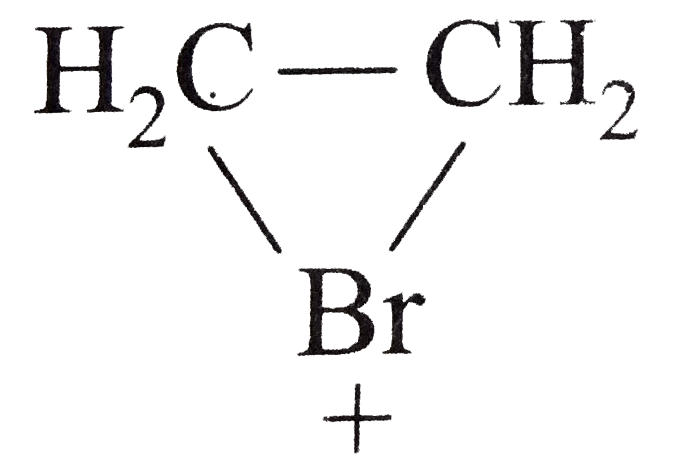Statement-I : Addition of Br2− water containing dissolved NaCl to ethylene gives a mixture of 1,2− dibromoethane, 1−bromo−2−chloroethane and 2−bromoethanol.
Because
Statement-II : Addition oC Curs through a carbocation intermediate.
The correct Answer is:A
Topper's Solved these Questions
- BOOK - ALLENCHAPTER - ALKENE, ALKANE & ALKYNE EXERCISE - EXERCISE-4(A)10videos
ALKENE, ALKANE & ALKYNE
- BOOK - ALLENCHAPTER - ALKENE, ALKANE & ALKYNE EXERCISE - EXERCISE-4(B)10videos
ALKENE, ALKANE & ALKYNE
- BOOK - ALLENCHAPTER - ALKENE, ALKANE & ALKYNE EXERCISE - EXERCISE-1119videos
ALKENE, ALKANE & ALKYNE
- BOOK - ALLENCHAPTER - AIIMS 2019EXERCISE - CHEMISTRY35videos
AIIMS 2019
- BOOK - ALLENCHAPTER - ALKYL AND ARYL HALIDEEXERCISE - EXERCISE-05 (B)37videos
ALKYL AND ARYL HALIDE
Similar Questions
Statement-I : Chlorination of ethyl benzene with Cl_(2)∈prescenceofheatandlight≠arlyyield1-yield1-chloro-1-phenyletha≠asmajor∏uct.<br>Because<br>Statement−II:ThereactionoCCursthrough∫ermediateformationoftheradicalC_(6)H_(5)CH-CH_(3).
View SolutionStatement-I : Chlorination of ethyl benzene with Cl2 in presence of heat and light mainly yield 1-chloro-1-phenyl ethane as major product.
Because
Statement-II : The reaction oC Curs through intermediate formation of the radical C6H5CH−CH3.View Solution
Knowledge Check
- Question 1 - Select One
Statement-1. Propene reacts with HBr in presence of organic peroxide to give 1-bromopropane
Statement-2. The reaction occurs through carbocation intermediateAStatement-1 is True, Statement-2 is True , Statement-2 is a correct explanation for Statement-1BStatement-1 is True, Statement-2 is True , Statement-2 is not a correct explanation for Statement-1CStatement- 1 is True, Statement-2 is FalseDStatement-1 is False, Statement -2 is True - Question 2 - Select One
Ethylene reacts with Br2 to give 1,2-dibromoethane. The reaction proceeds through the formation of the intermediate
ABrCH2+CH2BBrCH=+CHC D
D
- Question 3 - Select One
Ethylene reacts with Br2 to give 1, 2-dibromoethane. The anti-adddition takes palce due to the formation of which intermediate ?
ACH2Br−+CH2B CBrCH=CH+D
CBrCH=CH+D
The formation of 1, 2 dibromoethane from ethene and bromine is an example of:
A Substitution B Dehydration C Dehydrohalogenation D AdditionView SolutionAddition of BrCCI3 to propene in the presence of peroxides gives 3-bromo-1, 1, 1-trichloro-2-methylpropane.
View SolutionAddition of BrCCI3 to propene in the presence of peroxides gives 3-bromo-1, 1, 1-trichloro-2-methylpropane.
View SolutionStatement 1:Addition of Br2 to 1-butene gives two optical isomers.
Statement 2:The product contains one asymmetric carbonView SolutionAddition of one mol of Br2 to 1,3-butadience at room teperature gives
View Solution

